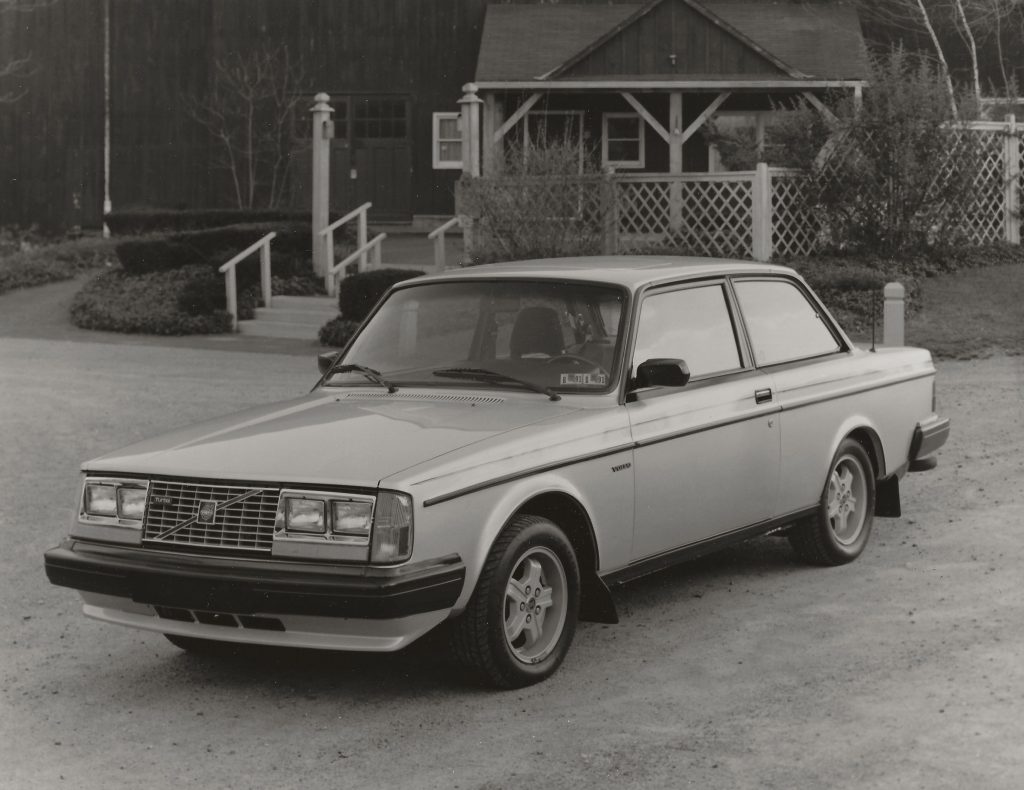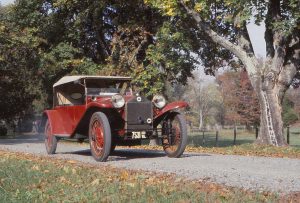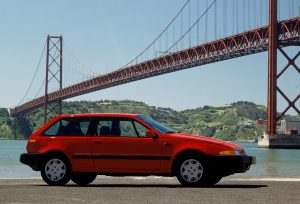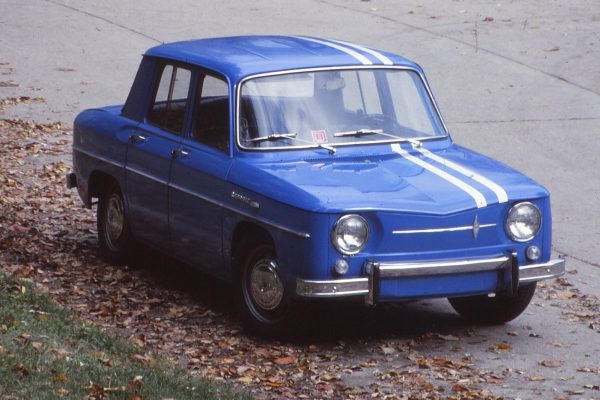History originally published in the Illustrated Volvo Buyer’s Guide, 1983, by John Matras; republished by the author

The 1983 Volvo Limited Edition 240 Turbo is called the “Flat Hood” because it has a flat hood.
If politics makes strange bedfellows – keep your prurient thoughts to yourself – then racing makes unusual variants available to car buyers. In particular this refers to what has become known as the 1983 Volvo Limited Edition 240 Turbo.
It is not described in any factory literature, and the name is merely customary. Special Edition is also used to describe the car. Volvo gave it no name and probably was reluctant to put anything into print lest it run afoul of the public, the government, or FISA, the international race sanctioning body.
The car in question was a special model for the European Touring Car Championship, which has a 5,000 car homologation minimum, though “evolution” models need a run of 500 cars only. Because fuel economy as well as power was important in this series, and because the Lambda Sond-equipped cars were the most fuel efficient, and because Lambda sound cars were sold only in the North American market at the time, Volvo decided to homologate the cars in the United States.
And since the “flat hood” of the first series 240 was more aerodynamic than the later “formal” grille, the car was homologized with that hood and the flat grille` from the 1978 – 1980 European model, sprayed silver over its original black.
As prepped for the FISA inspection, the cars were equipped with a larger-than-standard turbocharger, the factory intercooler that would not be available until mid-year 1984, and a combination of cylinder head and intake manifold both rigged with fuel injection jets in each; the manifold jets supplied a water-alcohol mix at boost pressures over seven psi. The modification resulted in anything but a showroom stock racer: Volvo published specifications listing maximum power of 340hp at 6600 rpm and maximum torque at 400lb-ft at 4000-6000rpm. Trunk-lid spoilers were also placed in the trunk of every car.
The cars were not sold this way, however. All the special equipment (exclusive of the body parts and intercooler) was removed – if in truth it had been installed – and the spoilers shipped back to Sweden. Volvo’s logic, when FISA learned of the ruse, was that the cars needed only to be sold with the equipment (and they were, to the distributor), not delivered that way to the public
Though it is unlikely that anyone would bogus a Limited Edition, Volvo outwardly identified the car as a 1983 GLT two-door; its window sticker had an extra line: “Intercooler and Trim Package, $995.00.” You can, however, check the designation plate for an “SXXXXXX” identifier.
Serial numbers are not consecutive, as the intercooler kits were installed after the cars were shipped to the United States and mixed in the port parking lot. Manual and automatic transmission versions were produced, and approximately half were distributed from each coast, which should not be taken to mean that none were sold by dealers in the Midwest.
What the Limited Edition cars are, then, are “early” intercooler cars, though with less flashy grilles. However, they do not have the larger clutch plate of the factory intercooler-equipped cars of 1984-1985, nor the thermostatically controlled electric fan for the radiator. Although the later cars are mechanically superior, the racing connection imbues them with an extra panache and superior collectibility – but probably not as much as current owners would like. Be price wary on these cars.
Addendum: Lambda Sond is described in a Volvo press release.








What Do You Think?
You must be logged in to post a comment.